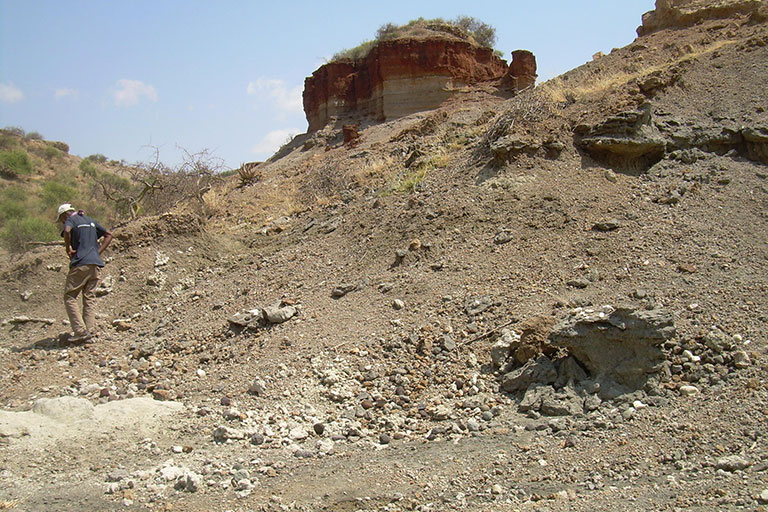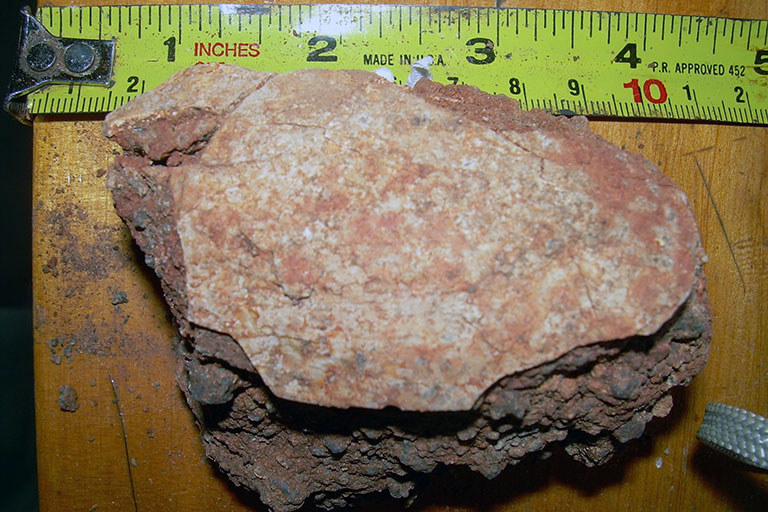Background
Although numerous publications from Olduvai Gorge revealed an exceedingly rich record of hominin and archaeological remains, I discovered that invertebrates from the region were not collected systematically and were rarely noted, despite their potential for paleoecological indicators of depositional environments for the time of evolving hominin lineages.

Freshwater Environment
The lower beds at Olduvai had been interpreted as a lake or lacustrine environment. Through my field investigations in the upper beds, I discovered large, 10cm long, invertebrate bivalve fossils embedded in the rocks. I proposed the hypothesis that these fossil bivalves were living in a riverine rather than a lacustrine environment. Through character comparison of fossil to modern African shells, combined with sedimentologic data and details of grain size, shape and bedform characteristics, a freshwater river system with seasonal fluctuations and periodic dessication was proposed.

Landscape evolution
Of importance, this evolutionary paleoecology research shows there was a freshwater system less than 1km from the locality where M.D. Leakey found skull remains of H. erectus. Our work thus enhanced details of landscape evolution for a time critical to the evolution of our ancestors, using an indicator – fossil invertebrate bivalves – heretofore not explored for this famous site of Leakey. Although the fieldwork was concentrated on bivalve field collections from Beds III and IV, we integrated molluscs from the older beds – earlier times – and interpreted these depositional environments as well, notably in terms of availability of freshwater, to gain a sense of the evolution of invertebrate biota and environments concurrent with the evolution of the hominins.
Objectives + Results
The objective of the work is to examine minerals in the 20-plus rock columns measured at the site and, using the first occurrence and provenance of a particular set of minerals, to provide mineralogical datasets that can serve as time lines for correlating Beds III and IV. The goal for this research is to ascertain the processes responsible for deposition of Beds III and IV, which are the rocks associated with aschulian tools and with Homo erectus fossil remains.
Drilling at Olduvai
We are in the process of examining samples from the drill cores, and correlating Beds III and IV from outcrop to core.
Phase I of our work – field rock investigations of Beds III and IV - will be completed in summer 2018, outcrop to core correlation will follow.
Previous field seasons in Tanzania concentrated on ~1 million year-old bivalves and depositional environments. Future work focuses on details of Beds III and IV, and on core to outcrop correlations.
It is anticipated that these data will allow rocks at Olduvai to be correlated to other localities in the East Africa Rift Basin to gain a regional perspective on environmental changes during hominid evolution.
Results
Our work resulted in the following publication: Johnson, C.C., Njau, J.K., Van Damme, D., Schick, K., and Toth, N. 2016. Paleoecologic significance of malacofauna, Olduvai Gorge, Tanzania. Palaios 31(6):319-326. DOI

